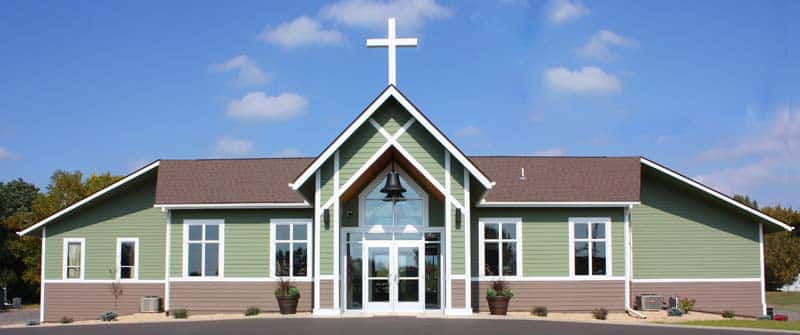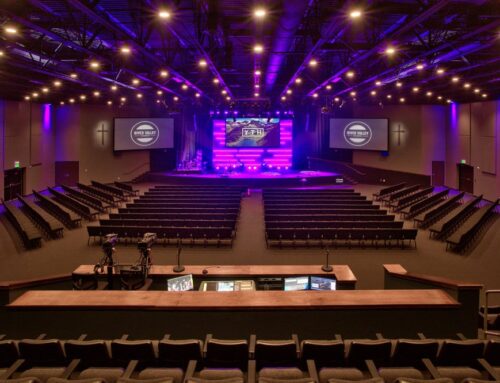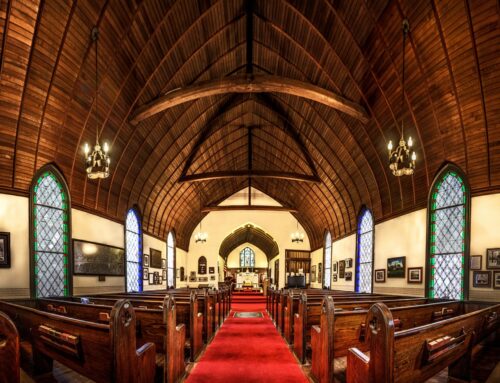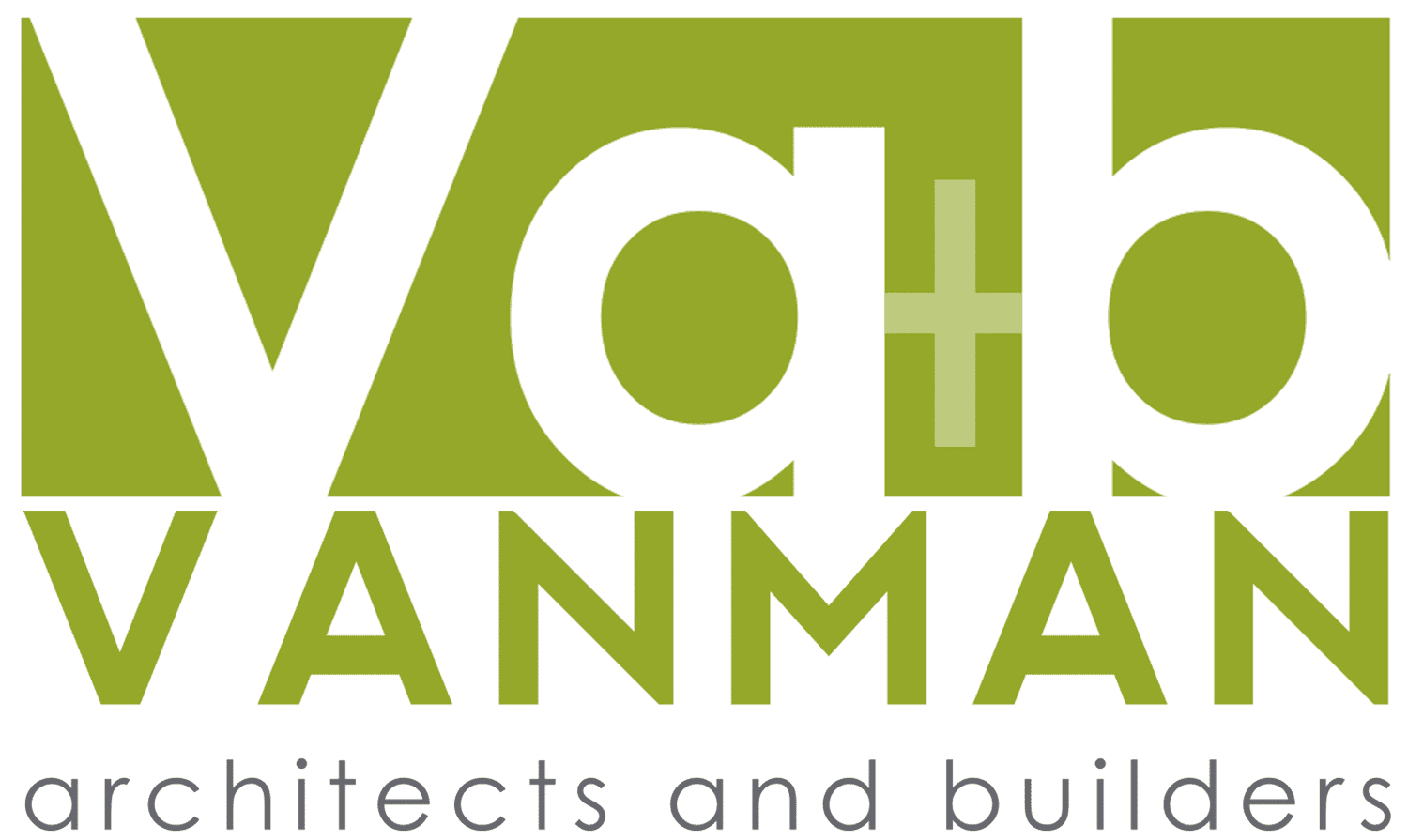While many of the lessons from scripture apply to our 21st-century lives, classic church designs have fallen by the wayside when it comes to today’s society. Gone are the days of the copy and paste brick and mortar projects.
Today, modern church architecture characteristics are unique to each building due to the array of church sizes across the country. But when it comes to trends in congregation retention, the characteristics are vital, no matter a church’s square footage.
But what do these characteristics look like? How can you apply them to your new church? Put yourself in your congregation’s shoes, and let’s walk through a typical Sunday (or Saturday) to examine how modern church architecture characteristics help make each day of worship special.
Before the Service
As churchgoers walk toward your building, the entryway will be the first impression your church makes. Your goal should be to make this section of your building open and welcoming.
Overhangs extending from the front door of your church offer shelter to the congregation before they enter. This will also make for a good space to visit before and after church while enjoying the outdoors on a sunny day.
Another key feature your entryway should include is windows. Large, elegant windows will give people the opportunity to preview the interior before they step foot inside your church. And of course, an abundance of natural light is a great addition to your Sunday morning sermon.
Early Christian church architecture featured a narthex — an entrance or lobby area opposite of the main altar. Usually, these structures were built high into the air. Older churches and a few modern ones feature beautifully tall structures as their narthex. Yours doesn’t have to be quite as tall, but the community space of the narthex allow your congregants to gather and socialize before and after service.
The Church Seating Design
When walking through the lobby and entering the sanctuary, you have one chance to create an ambiance that politely asks individuals to sit down and enjoy today’s worship. You can accomplish this through several church seating designs.
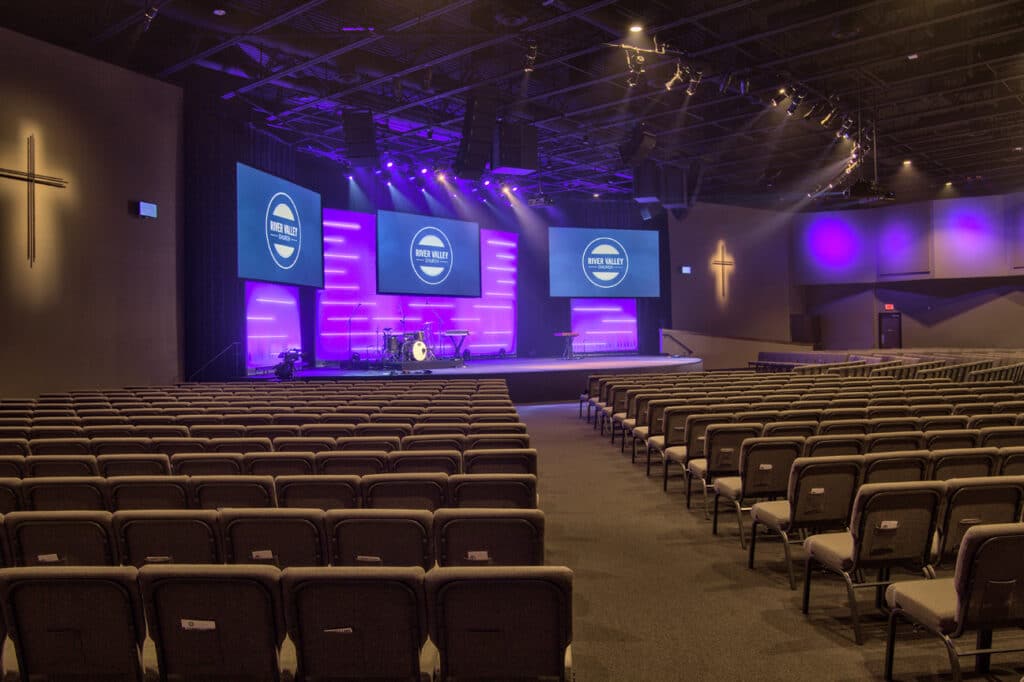
You have two options when it comes to seating design for your church: individual chairs or pews. Let’s look at the pros and cons of each one.
Individual Chairs
- Pros: More comfortable and easy to move if you need to create open space in the sanctuary for an event
- Cons: Nontraditional, not as durable as pews
Pews
- Pros: Traditional style, naturally brings people closer together with a less individualized seating arrangement
- Cons: Difficult to move, sometimes uncomfortable and more expensive up-front
An important factor to keep in mind when deciding on your church’s seating design is how big your congregation is. Will a sea of pews provide the intimacy you’re looking for during a service, or will chairs make for a more engaged audience?
Vanman can help you establish the best seating option for you. Our architects listen to your needs to get an idea of what will best serve your existing members and point you toward trends in congregation retention.
The Service Experience
Once the congregation has settled into their seats, their attention will naturally be drawn to what’s in front of them. They will typically see an altar, podium and a platform or stage around it. How should this look for your facility?
In short, the less crowded the stage is, the better. A trick to make your alter appear as the focal point is to use black fabric as a backdrop. This will help highlight what’s in the foreground — the pastor and choir. This clean backdrop will also improve acoustics and ensure the noise from the stage is projected toward the audience.
An important modern church architecture characteristic that we cannot stress enough is lighting. Older churches may not have the capability, but if you can control the lights in your sanctuary, the more your congregation can focus on what’s happening in front of them.
We recommend installing several theatre lights on the ceiling behind the congregation that can direct where the audience’s’ eyes should go during worship.
Where Should the Choir Go?
Traditional churches were built with the choir or band off to the side in their own section. Today, church choirs and bands may join the preacher near the altar. This way they can benefit from the acoustics around the stage and the congregation can easily shift their focus once a hymn begins.
Never put the band or choir behind the pastor. They can stand as still as statues during the service, but they are a natural distraction if they’re in the same line of vision as the pastor.
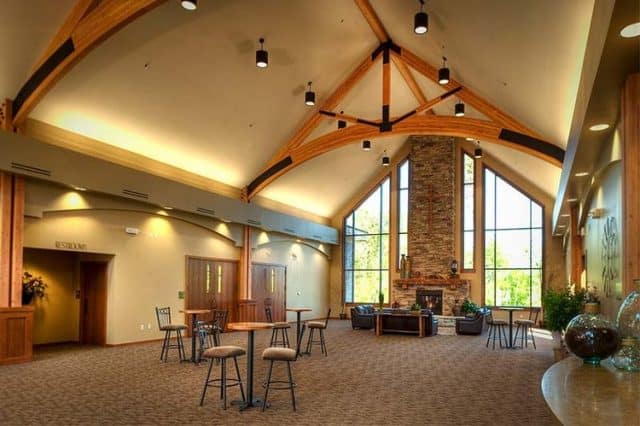
Having Space When the Service Is Over
Once the last hymn has been sung and the final blessing has been shared, the last thing you want is your congregation filing toward the parking lot.
A community space can be an inviting way to encourage people to remain at church after the service is over. This can be easily incorporated into your church’s design by sectioning off several spaces between the entryway and sanctuary.
Invite people to stay and visit before the service is over and offer coffee, lemonade and other treats. This space doesn’t need to be extravagant — just big enough to encourage fellowship and friendly conversation among your members. This element can go a long way in making sure you’re ahead of the trends in congregation retention.
The Age Old Question: How Big Is Big Enough?
According to the Hartford Institute for Religion Research, there are 177,000 churches in the country that have fewer than 100 regular attendees. Going too big can leave your church with a lot of empty space and a lack of connection between your members.
However, larger churches do present you the opportunity to grow. They also give you flexibility with your sanctuary and communal space. Your church will be more versatile and will give you the opportunity to open your doors for events like local craft sales and youth events.
Vanman has designed and built hundreds of churches, both big and small. Our design team has the tools to tackle a project of any size and will collaborate with you to construct the best church for your members.
You can learn more about our approach to modern church architecture characteristics by exploring our website.

